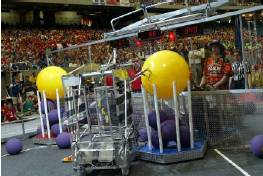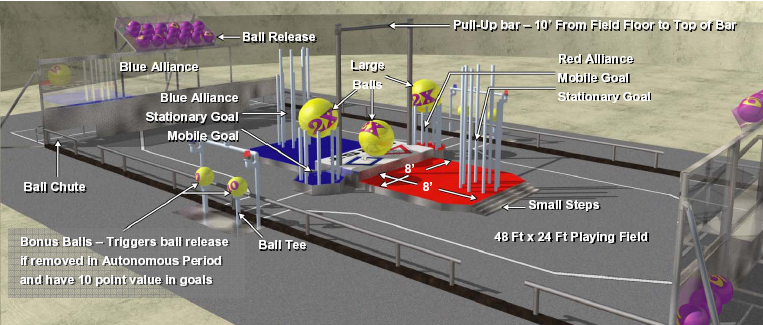Upcoming Events:
Error 406 - Not Acceptable
Generally a 406 error is caused because a request has been blocked by Mod Security. If you believe that your request has been blocked by mistake please contact the web site owner.
Full event list
Error 406 - Not Acceptable
Generally a 406 error is caused because a request has been blocked by Mod Security. If you believe that your request has been blocked by mistake please contact the web site owner.
FIRST® Robotics Competition (FRC®)
History Main | 1992: MAIZE CRAZE™ | 1993: RUG RAGE™ | 1994: TOWER POWER™ | 1995: RAMP N' ROLL™ | 1996: HEXAGON HAVOC™ | 1997: TOROID TERROR™ | 1998: LADDER LOGIC™ | 1999: DOUBLE TROUBLE™ | 2000: CO-OPERTITION FIRST™ | 2001: DIABOLICAL DYNAMICS™ | 2002: ZONE ZEAL™ | 2003: STACK ATTACK™ | 2004: FIRST FRENZY™ | 2005: TRIPLE PLAY™ | 2006: AIM HIGH™ | 2007: RACK N' ROLL™ | 2008: OVERDRIVE™ | 2009: LUNACY® | 2010: BREAKAWAY™ | 2011: LOGOMOTION™ | 2012: REBOUND Rumble™ | 2013: Ultimate Ascent™ | 2014: Aerial Assist™ | 2015: Recycle Rush | 2016: Stronghold | 2017: Steamworks | 2018: PowerUp
2004: FIRST FRENZY - RAISING THE BAR™
The game of the 2004 FIRST competition is FIRST FRENZY: RAISING THe BAR™.
The object of the game is to attain a higher score than your opponent alliance by delivering balls into goals, capping
goals with larger balls, and/or having robots hanging from the Pull-Up Bar at the end of the round of competition.
Two alliances comprised of two teams compete in each match, one red and one blue.
Each team will have two drivers, one human player and one coach each match. The drivers and human player must be high
school students. Only the human player may throw balls onto the field.
Teams will become frenzied as they strategize on whether their robots will negotiate IR beacons during the Autonomous
Period, herd small balls to Ball
Corrals, cap large balls on goals, move mobile goals, climb steps or attempt to hang from the Pull-Up Bar. The object
of the game is for teams’ robots to
trigger the Ball Release during the first 15 seconds, collect balls and feed them to the Human Players who will throw
them into the goals. Robots will try to
cap the goals with large balls to double the point value contained in that goal and attempt to end the match hanging
from the center Pull-Up Bar. The final
score is the result of adding small ball points in the goals, doubling the points for goals that are capped, and adding
50 points for any robot that is hanging
from the bar. Each match will feature two-team alliances playing from opposite ends of the playing field. The robots
from each of the four teams will be
placed in starting positions straddling the white lines on the carpet in front of the drivers. The robots will be
allowed 15 seconds to function autonomously,
without driver control of any kind, to race to the Ball Tees, remove the balls and activate the Ball Release mechanism
at their end of the field. After the
"Autonomous Period," the robots will be under complete control of their drivers for the remaining 1 minute and 45
seconds of the match. If the Ball
Release is not activated during the Autonomous Period, it will automatically activate at the 45-second mark of the
match. This year’s game requires
excellent coordination between the robots and very accurate Human Players. With multiple ways to score points, it
will be necessary to track your score
as well as your opponent’s score and make critical decisions near the end of the match. There will surely be a frenzy
of activity as the clock winds down.
Robot Restrictions:
- Starting size limit: 30"x36"x60"
- Weight Limit: 130 lbs
- $3,500 limit, $400 for any single component, $300 limit on electronics/$100 limit on any single electronic component
- 2+ year veterans don't get compressor or battery charger
- Bumpers allowed outside starting size, but not weight limit





